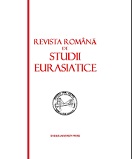DOBRUDJA, A MULTI-ETHNIC SPACE. THE JEWS (1878-1947). CULTURAL LEGACY. CASE STUDY: TULCEA COUNTY
DOBRUDJA, A MULTI-ETHNIC SPACE. THE JEWS (1878-1947). CULTURAL LEGACY. CASE STUDY: TULCEA COUNTY
Author(s): Iolanda ŢighiliuSubject(s): History
Published by: Ovidius University Press
Keywords: Dobrudja; Tulcea; jews; synagogue; school; Temple; sportive Society “Macabi”.
Summary/Abstract: The Law for Organization of Dobrudja (1880) divided Dobrudja into two counties: Constanta and Tulcea. The Law stipulated that “freedom of consciousness is absolute; freedom of the cults is guaranteed”. The spirit of tolerance, characteristic of the modern epoch, is thus anticipated. In Dobrudja, Sephardic Jews (of Spanish rite) and Ashkenazy Jews (of Germanic rite) lived peacefully together in the end of the 19-th and in the 20-th centuries. Demographic references. From the end of the 19th century to the the middle of 20th century, the population of Tulcea town grows continuously, as well as Jewish population. In 1879, in Tulcea town were 304 Jews, in 1908 - 1899 Jews. In 1907, Tulcea county had 3131 Jews. After 1948, a massive process of emigration of the Jewish population from Romania to the new state of Israel began. In this context, their number would dramatically decrease. According to the 2002 Census, about 5800 Jewish live in Romania today, of which 52 in Constanta County and 25 Tulcea County. Life of Israelite community. In Tulcea town, the Jewish community had a school and a Temple (which would be repaired in 1890) that were still in function from the times of ottoman domination, and two sinagogues. During the inter-war period the Jewish from Tulcea didn’t have their own publications. They settle up, instead, in 1922, the first sportive society from the town – the „Macabi Society”, with 50 members. The society functioned over a decade. In Tulcea town, the two synagogues were demolished in the ’70s when the centre of the town was systemaized. There is only one Temple now. Ample work of consolidation and restoration have been started since 2010, with funds from the Jewish Community Federation from Romania.
Journal: Revista Română de Studii Eurasiatice
- Issue Year: 7/2011
- Issue No: 1+2
- Page Range: 97-114
- Page Count: 18
- Language: English

